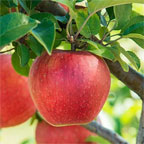Q.How to get rid of out of control Tom thumbs?
We planted one plant a few years ago & it has completely taken over and looks an eyesore
- A.
I had the same problem and chose to dig out the plants and their numerous sturdy roots. Another option is chemical control. It is difficult to get herbicide to penetrate waxy leaves. Use a surfactant to get herbicide to "stick". (try an internet search for herbicide surfactants) An herbicide that is for brush and contains triclopyr works better than glyphosate. Follow instructions on the labels. Shrubs/small trees are often killed by painting herbicide concentrate directly on cut stumps. However, there are many "stumps" to a large cotoneaster because it roots where branches touch the soil. On the other hand, it will be cut down at some point so consider this option. Stumps should be painted within an hour of being cut, the sooner the better.
Was this answer useful?00


